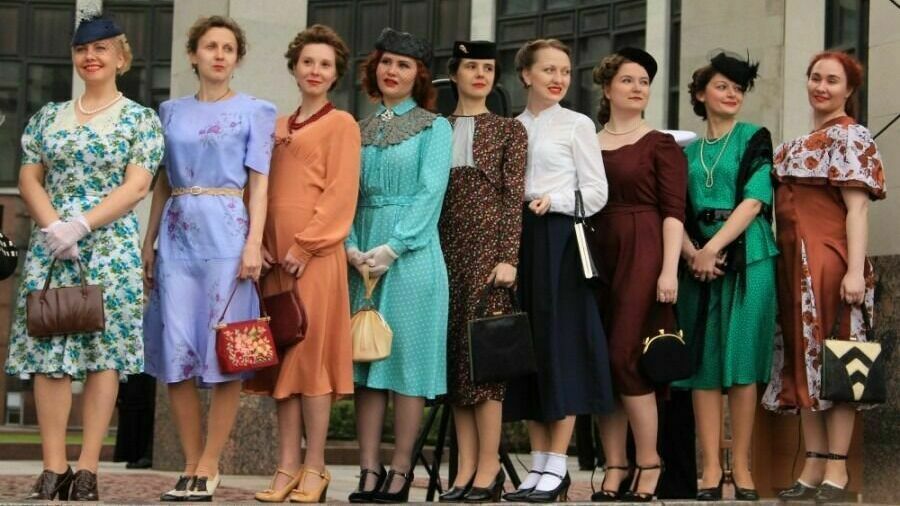Posted 8 марта 2023, 09:29
Published 8 марта 2023, 09:29
Modified 8 марта 2023, 11:00
Updated 8 марта 2023, 11:00

"Without the heels you are not a woman!" The network recalls how the citizens of the USSR dressed
Recently, Novye Izvestia published material in which experts criticized the scripted authenticity of the new Russian TV series "Fisher", dedicated to the story of a serial killer operating in the Moscow region in the late 1980s. However, it turns out that in some ways that era in the series is displayed and truthfully. In particular, in the clothes of his heroes. The writer Marina Shapovalova drew attention to this, for whom this fact became an occasion to once again remind about the squalor of Soviet life:
"You don't remember anything. But I remember. I was 27 years old in 1988. The investigator at Fischer, you say, walks through the woods in high-heeled shoes? And what should it be? If I were wearing sneakers, it would be me laughing to the point of colic!
There were no, damn, sneakers then! For the sake of realism, she could change into rubber boots, which she took to the car, wrapped in a newspaper. Because plastic bags, although they were already there, but as a fashionable deficit - it's not dirty boots to carry in them, by no means.
A female investigator at work in trousers is unlikely. It is possible, but with a very low probability. Because women in 1988 (have you forgotten?) they wore dresses and skirts. The young ones are in jeans. But there are nuances. Almost everyone had real jeans ("Firm"), but only one, because at a price of two average salaries. Indian - one and a half average salaries. In the midst of Perestroika, this is still a "varenka": any, including non-branded jeans or just blue fabric etched with bleach. It was possible to buy at the flea markets at an affordable price.
But they didn't go to work in this then. Wrong dress code. A rare and very advanced (there was no such word either) boss wouldn't mind. An ordinary Soviet boss would have made a remark: you have to go to work "not like dancing." Not in jeans and not in "varenka". And such a nomination as "women's trousers" was not on sale at all. There were pantsuits. Imported. In them, some kind of "top" was attached to the trousers: a vest, jacket or tunic. But it was still necessary to get it. Do you remember the word "get"? With hands, with overpayment.
Watch the video chronicles of those years! Women wore dresses and skirts. Who is younger (up to 30-35) - with high-heeled shoes, yes! Because otherwise it looked terrible. After forty, they put up with it. Almost all.
It generally looked terrible - what we were wearing then. Young, beautiful women of the late 80s. And high-heeled shoes, often the only ones, helped us brighten up the textile squalor of the light industry and indposhiva according to patterns from the "Burda".
You wouldn't understand. And I remember myself. I remember the pain in the metatarsal bones and phalanges. How I wanted the elegance of thin ankles, unforeseen by the historical inevitability of Soviet socialism..."
This post caused a lot of nostalgic comments, which added a lot of remarkable details:
- I was wearing a bell-bottomed coat, a hat and rubber boots through the construction site to the pump, washed my boots and put on fashionable 12 cm stilettos and was already on my way to work, and until the evening in them. Home in the evening — the procedure was repeated in reverse order. My grandmother wore heels at the age of 84, taught: as soon as you get off your heels, that's it, you're not a woman!
- In the mid-1970s, I worked as a teacher at the institute (lectured and conducted practical classes) and wore a pantsuit that a dressmaker sewed for me.
There were attempts by the administration to ban this type of clothing, but we survived!
- My mother wore trousers and pantsuits at work, they were allowed, but somehow she had to go to the Council of Ministers for some business, or I don't remember what this institution was called, and they wouldn't let her in trousers.
But it was autumn, and that's why Mom is wearing a raincoat: she rolled up her trousers under her raincoat, and so passed. Tashkent, 1970s…However, not everyone agreed with the author, remembering that, nevertheless, during the years of Perestroika, it became much easier to get normal comfortable and beautiful clothes than before:
- Well, too much... It was miserable, yes. Nevertheless, most of them had sneakers, even if not cougar or nike, there were jeans for every day, as well as other normal clothes, which, of course, were not bought in a nearby department store. The described can only be in some kind of Mukhosransk thread was possible, and I doubt it. And now you can find such starvelings.In the series, even without these shoes, there is a lot of deliberate from the director's ideas about the scoop.
Even the director, apparently, has only boyish ideas about that time.- We have Dnipro - Zaporozhye in the 1980s, Romika - Bulgaria sneakers were popular, tomis - Romania for 100 rubles, and adidas from 120 to 150 - Yugoslavia, Moscow, Romania, Bulgaria.
Well, there were poor ones - Kiev and Lviv. And sneakers, by the way, are very high quality: Vietnam and China.
- Nonono!
They went to work in jeans already in 1980. I went to my research institute in them myself. Teachers, especially the lower grades, were really forbidden to go to school in them. And there were definitely sneakers in 1988. My first sneakers appeared in 1981.